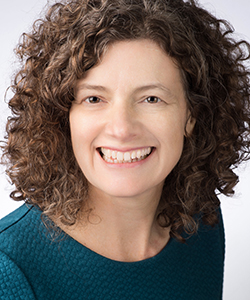My elevator speech about NSDC — that is, my 30-second compelling explanation of professional learning — isn’t as honed as I would like. Internally, we talk about the importance of having a clear, concise statement about what NSDC is and why we exist. Make your message straightforward: “We help students by ensuring quality learning for their teachers.” Yet when I’m chatting with someone outside of education, my faith falters. Will he understand that teachers need resources to continuously build their knowledge and skills, just as doctors and electricians do? Will she question whether time spent on something other than instruction benefits students? So I stumble a bit, spending too much precious face time on dull explanations and rationalizations.
The same thing happens with family and friends. I assume their starting place on the question of professional learning is distant from mine and NSDC’s. Surely they need to be carefully sold on this concept. We all hear people questioning why there’s another teacher workday. In fact, we hear enough teachers questioning why there’s another workday to doubt that even they hold professional development in high esteem. For this, we can blame years of learning experiences that didn’t connect to the work these teachers do with students.
I’m confident I can conquer my crisis of confidence in a pithy elevator speech. I’ve learned from ongoing conversations about professional learning that people are ready to support our purpose and that “outsiders” can understand the importance of what we do. My barometer on this, as on many life questions, is my mom. She isn’t a professional educator, though her years as a volunteer in her local elementary school give her a clear window into the needs of students and teachers.
Yet after talking with me about the last few issues of JSD, I know that her understanding of professional development is transformed — she gets it.
People learn about the value of effective professional learning from all angles. Community members read how teachers are learning to integrate 21st-century skills into the curriculum. Parents talk to their kids’ teachers at the grocery store and hear how investments in schoolwide learning are producing results. Teachers work with a visionary leader who targets teacher learning as the key to school improvement. Principals support a maverick team of teachers looking to improve student learning.
With that in mind, we all need to have a quick, convincing answer to explain why professional learning matters. The answer needs to be compelling enough to tempt listeners to continue the conversation. As Hayes Mizell writes, “Staff development’s brand is tarnished,” (see article on p. 12) and we all need to do our part to improve both the product and the brand.
Before I get on that next elevator, I’ll perfect my opening lines so that I’m prepared. Are you willing to do the same? Better learning for students never fails as a hook, and NSDC’s recent research study, highlighted in this issue of JSD on p. 42, gives plenty of evidence to support our compelling statements. I welcome your feedback on JSD anytime.

Tracy Crow served as chief strategy officer for Learning Forward.
Recent Issues
LEARNING DESIGNS
February 2025
How we learn influences what we learn. This issue shares essential...
BUILDING BRIDGES
December 2024
Students benefit when educators bridge the continuum of professional...
CURRICULUM-BASED PROFESSIONAL LEARNING
October 2024
High-quality curriculum requires skilled educators to put it into...
LEARNING TO PIVOT
August 2024
Sometimes new information and situations call for major change. This issue...









